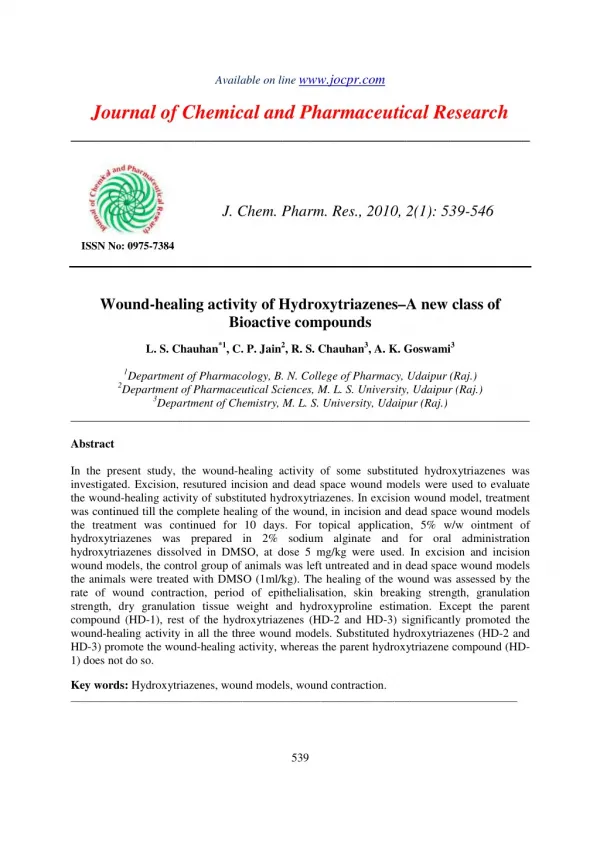Wound-healing activity of Hydroxytriazenes–A new class of Bioactive compounds
In the present study, the wound-healing activity of some substituted hydroxytriazenes was investigated. Excision, resutured incision and dead space wound models were used to evaluate the wound-healing activity of substituted hydroxytriazenes. In excision wound model, treatment was continued till the complete healing of the wound, in incision and dead space wound models the treatment was continued for 10 days. For topical application, 5% w/w ointment of hydroxytriazenes was prepared in 2% sodium alginate and for oral administration hydroxytriazenes dissolved in DMSO, at dose 5 mg/kg were used. In excision and incision wound models, the control group of animals was left untreated and in dead space wound models the animals were treated with DMSO (1ml/kg). The healing of the wound was assessed by the rate of wound contraction, period of epithelialisation, skin breaking strength, granulation strength, dry granulation tissue weight and hydroxyproline estimation. Except the parent compound (HD-1), rest of the hydroxytriazenes (HD-2 and HD-3) significantly promoted the wound-healing activity in all the three wound models. Substituted hydroxytriazenes (HD-2 and HD-3) promote the wound-healing activity, whereas the parent hydroxytriazene compound (HD1) does not do so.
★
★
★
★
★
93 views • 8 slides
